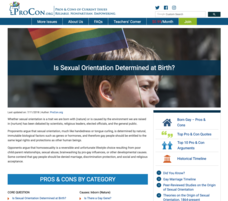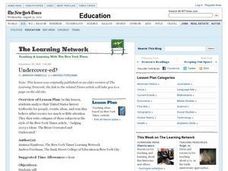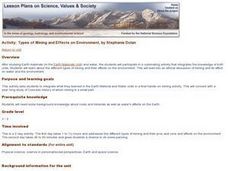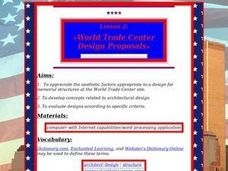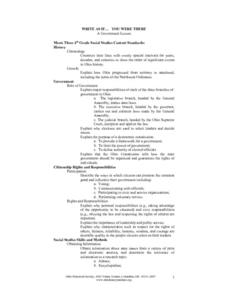Council for the Curriculum, Examinations and Assessment
Health and the Whole Person
The first lesson of the unit introduces class members to the social, physical, emotional, cognitive, and spiritual constituent elements of health and the need for balance among these elements. Class members used the provided assessment...
Curated OER
Bigger, Faster, Stronger . . . Higher
Students analyze popular feelings and beliefs about two major disasters: the sinking of the Titanic (1912) and the explosion of the Space Shuttle Challenger (1986). They compile evidence, through research and interviews, about how much...
Curated OER
Born Gay
Is a person's sexual orientation determined at birth? With the informative website, scholars prepare for a debate about the topic. They learn the top pro and con arguments and read through a historical timeline of homosexuality. They...
Curated OER
Undercover-ed
Have your class engage in critical-thinking activities using this resource. Learners discuss a variety of topics they think get too much, or too little, attention from the press. They analyze why these topics are over or underrated....
Curated OER
Immigration and Ancestors
We are all immigrants to this country and the study of immigration can help students connect to history in a personal way. Students will listen to audio clips from the Ellis Island web site, discuss the treatment of immigrants in the...
Virginia Department of Education
Historical Models of Atoms
What does the past have to do with today? Young scientists find that answer as they learn more about past chemists and their significant contributions to the field. Pupils use the Internet to research historical figures...
Curated OER
Social Studies: Your Family Does What?
Sixth graders compare and contrast their own personal culture with that of Japan. They fill out questionnaires, compile the results, and match them with Japanese answers to the same forms. Students create a Venn diagram of the...
Curated OER
Statehouse Time Capsule
Fourth graders create a time capsule that is representative of their community. They explain why the chosen objects are representative of themselves or their community.
Curated OER
Ohio Statehouse History
Fourth graders examine the history of the Ohio Statehouse and order the major historical events in its development. The lesson traces the development from the time of Ohio's vast wilderness to the house's completion in 1861.
Curated OER
Wilderness Survival: A Field Practicum
Students are provided with hands-on-field testing of authentic applications from principles pertaining to: Psychology A. Develop a positive, can-do attitude with a high degree of self-reliance that is transferable to human interactions...
Curated OER
World Trade Center Design Proposals
Students explore architectural design. In this critical thinking and architecture lesson, students view a number of websites providing proposals for design plans of a new World Trade Center. Students choose and evaluate three...
Curated OER
Endeavor: Preparing Ourselves for Future Destinations
Students define the word endeavor and then practice the art of self-discipline. They create character trait charts and discuss how strong character traits help students meet their future destinations.
Curated OER
Write As If...You Were There
Fourth graders use their imagination to create a story about being present when the Great Seal of Ohio was designed. They draw a picture of the Great Seal of Ohio.
Curated OER
Ohio's U.S. Presidents
Fourth graders investigate the state of Ohio's claim to be the "Mother of Presidents." Nine U.S. presidents were from the state and their contributions and terms of office are examined in this lesson.
Curated OER
Personal History
Fourth graders gain an appreciation of knowledge about recent history by interviewing senior citizens. They summarize their interviews and organize them into a written presentation.


